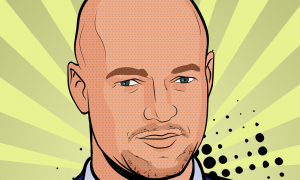
Brief Look at the Yale Endowment Model Versus the Norwegian SWF Model
Posted on 03/13/2012
The saying goes, when too much money is allocated into a strategy, it eventually stops working. How should sovereign wealth fund assets be managed? This is a major question for sovereign wealth funds and countries that are currently implementing them. Some have a preference toward the Norway model of managing SWF money which includes lower security ownership positions, low cost, greater transparency and less use of alternatives. The Norwegian model tends to rely on public investments, besides its latest investments in European institutional real estate. Others have witnessed the successes of the endowment model of Yale University, investing heavily into alternatives and “uncorrelated” investments, embracing private investments, and taking bigger stakes in specific investments. On June 30, 2010, the Yale endowment had 30.3% allocated to private equity and 27.5% allocated to real assets. Many sovereign funds have adopted certain aspects of the endowment model; especially given many have a very long time horizon and have a greater tolerance to illiquidity.
Sovereign wealth funds accepting the endowment model usually do not have contingent liabilities as endowments have.
| FY Annual Returns | 2010 | 2009 | 2008 | 2007 | 2006 |
|---|---|---|---|---|---|
| Yale Endowment (June End) | 8.9% | -24.6% | 4.5% | 28.0% | 22.9% |
| Norway GPFG (Dec End) | 9.62% | 25.62% | -23.30% | 4.26% | 7.92% |
Source: Annual Reports
Several large sovereign wealth funds are in the camp to take big stakes. Singapore’s GIC, Temasek Holdings, and the Qatar Investment Authority (QIA) somewhat subscribe to this philosophy. It leads to the strategy to find fewer, greater investments and increase the stake. In addition, many SWFs are investing heavily into real estate, private equity, absolute return strategies and commodities. On the other hand, sovereign funds like Norway’s GPFG have more of an index-approach to investing in equities and have ownership limits on certain individual investments. The bigger the stake, the more the investor grows idiosyncratic risk. This type of risk forces many investors to become activist shareholders, thus engaging in more shareholder activities, increasing financial and time costs.
There are other factors to consider in which we bring the argument of embracing beta strategies or alpha strategies. Realistically, most institutional investors utilize both. Cost factors are a concern for public investors and beta strategies are much cheaper than paying for active management. Norway’s GPFG relies on passive investing but it does award allocation to specialist managers who have expertise in specific areas such as a sector, country or region. Developing alpha strategies internally is even more difficult as many public investors have a challenging time hiring and retaining talent.
Lastly, in terms of assets under management, Norway’s GPFG is much larger than the Yale endowment. Second for Norway to implement the Yale endowment model, it would be very costly.
Keywords: Yale Investment Office, Norway Government Pension Fund Global, GIC Private Limited.

